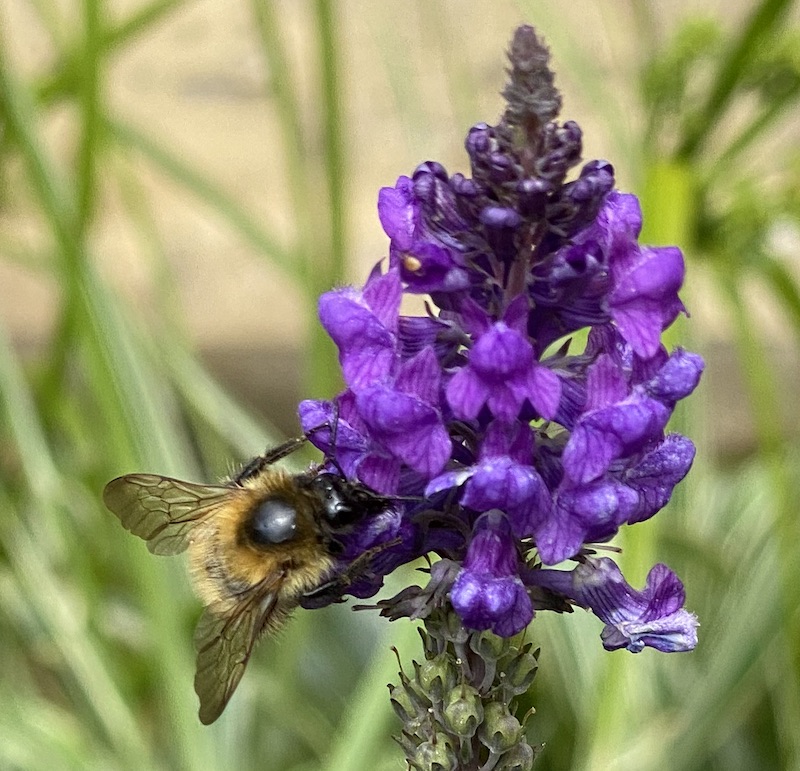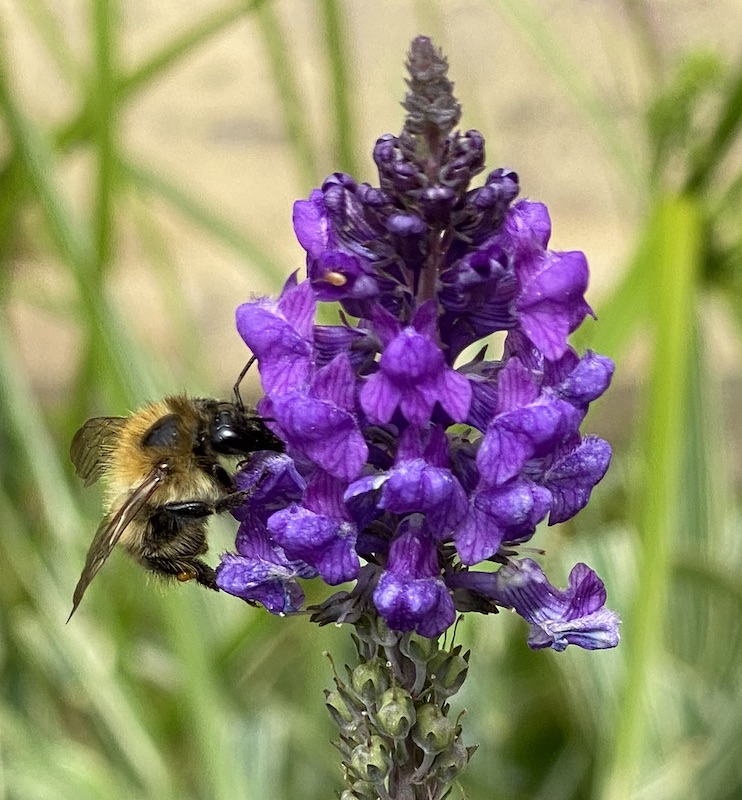As the old ode goes… Great fleas have little fleas, on their backs to bite them, and little fleas have lesser fleas and so on, ad infinitum. In this case the macro world of insects has its own macro inhabitants and they in turn eat microscopic critters. Isn’t nature brilliant!

Common Carder Bumblebee Bombus pascuorum
Thanks again to the ever responsive Bumblebee Conservation Trust (BCT) for confirming the ID of this bumblebee. Having misidentified many species, I didn’t trust my guess… but for once I was right. The Common Carder is a common and very widespread visitor to gardens.
As always, once I am sure that I’ve seen one I do a bit of research to know more about them. Apparently, the ‘carder’ name is because it combs together plant material as a covering for the cells made for the grubs. (Carding is the process of preparing wool by combing it all in one direction so the individual fibres combine). It nests in a grass tangle, often in old mouse runs.
I noticed in the photo below that there is a mite attached to its hind femur… directed by the BCT to a feature on their website here, I now know that, unless there are a great many and they become a burden, these sort of mites (Parasitellus fucorum) are not harmful to the bee. In fact, they just hitch a ride between nests and when in the nest eat small arthropods, detritus and wax so perform a marginally useful purpose.

The plant the bee is feeding on is Purple Toadflax Linaria purpurea. It is a perennial weed originating in southern Europe and common across England. Some species of toadflax have been used as medicinal herbs, as a purgative, astringent and detergent.





